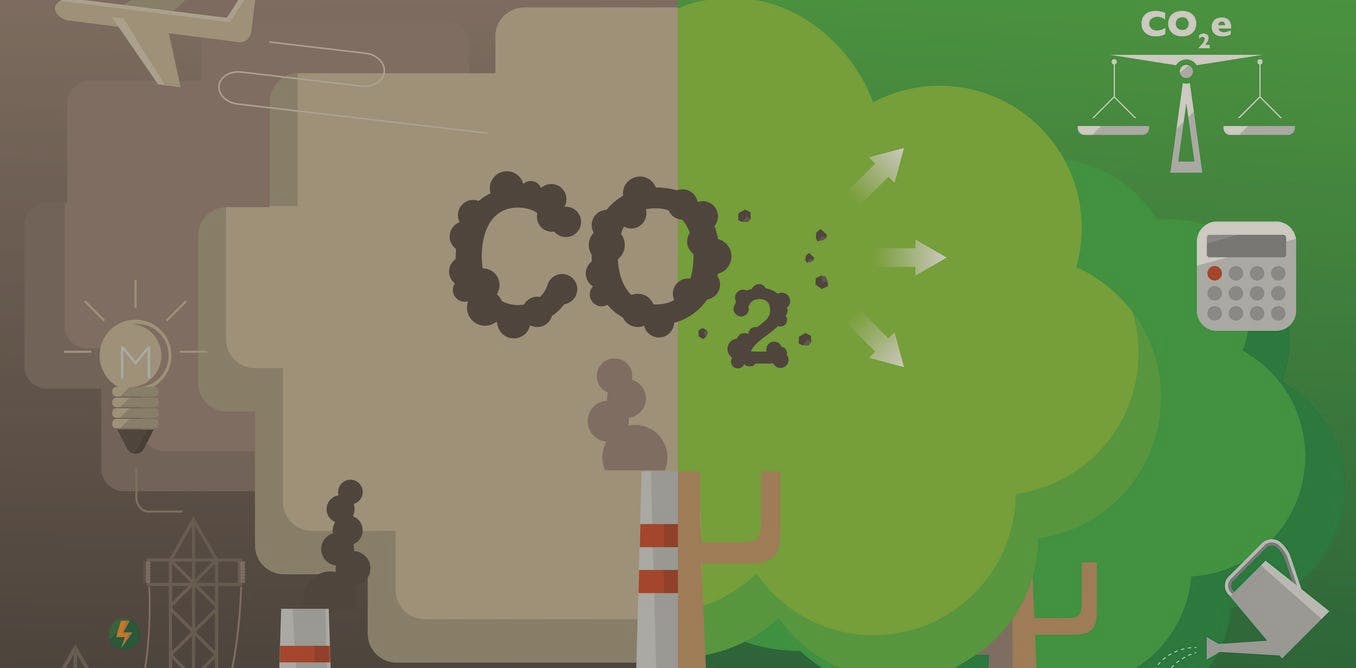Despite the outpouring of commitments over the past two years to reach net-zero emissions by 2050, global greenhouse gases remain on track to rise by 16 per cent this decade – far off what the science says is needed to reach that goal.
The outlook shows that while net zero commitments mark an important first step, they have yet to be backed up by necessary immediate action. As a result, they can act as greenwashing to mask business as usual.
The UN’s Intergovernmental Panel on Climate Change (IPCC) has made clear that the world’s best chance of reaching net-zero before 2050 is to halve emissions between 2020 and 2030 and restore and protect nature at the same time. This could limit global warming closer to 1.5 degrees Celsius, in line with the Paris Agreement.
The problem is that many of the businesses, investors and local and national governments committing to net zero so far have yet to begin making the changes this actually requires. It’s the equivalent of setting a destination into the GPS without mapping the route – let alone setting off.
Australian airline Qantas, for example, is committed to reaching net-zero emissions by 2050 but has yet to set out short- and medium-term targets or a strategy for decarbonising, according to Climate Action 100+. Meanwhile, the company has been operating “flights to nowhere” over the Great Barrier Reef – just for fun.

Of the 39 corporate net-zero-by-2050 targets assessed by Climate Action 100+, zero have allocated capital in line with the Paris goal for 1.5C, including Delta Airlines, Equinor, Glencore, Nestlé, Panasonic, PepsiCo and Rolls-Royce.
US oil and gas major Chevron, instead, says it aims to decarbonise its direct (scope 1 and 2) upstream emissions by 2050. But its plan leaves several gaps: the goal only applies to emissions from the production of fossil fuels, not their use, and says it will use vague “innovation and offsets” from 2029 to cover over half of the emissions reductions in the plan.
Its Anglo-Dutch rival Shell, similarly, includes a significant growth in carbon capture and storage technology in the 2020s to meet its net-zero target, allowing for more fossil fuel sales.

Empty promises
Reliance on offsetting carbon emissions is a red flag in any net-zero target. This applies to offsets that avoid emissions – say by preventing deforestation or funding renewable energy projects – or removing CO2 – by planting trees or building carbon capture stations.
IPCC science shows that offsetting should only be used for sectors and operations that remain hard to abate at the very end – because capacity to offset and remove carbon will be finite. Mitigating climate change should mostly be about preventing the release of greenhouse gas emissions, by for instance replacing coal-fired power with renewables and reducing the number of internal combustion engine vehicles on the road.
Offsets, instead, are meant to balance out emissions. So whatever Chevron is still emitting from its fossil fuel production in 2045 would, in theory, be offset by avoiding deforestation or planting of trees.
But this doesn’t work on a global scale. Already, less than 5 per cent of offsets granted in the global voluntary carbon market actually remove CO2 from the atmosphere, according to Bloomberg. The remainder merely avoids emissions that might otherwise have been produced.
Plus, there is not enough land to accommodate both the massive amount of reforestation that would be needed and the growing global demand for food, according to Oxfam. Over-reliance on tree-planting for offsets could push food prices up by 80 per cent by 2050, it found.
Reforestation for offsets also conflicts with Indigenous peoples’ land rights by using their land to justify continued pollution elsewhere in the world. And, there is always a risk that the carbon will be released back into the atmosphere – as happened when a California offset farm burned in wildfires. Technological options, such as direct air capture, are more permanent but remain expensive and far from commercial maturity.
Yet, corporate demand for voluntary offsets has already hit record levels in 2021 – reaching $748 million, and may break $1 billion before the end of the year, according to Ecosystem Marketplace.
This suggests that as commitments to net zero emissions surge in the run-up to November’s UN COP26 climate summit in Glasgow, so is reliance on offsetting schemes. A global agreement on the rules for international carbon trading – addressed in Article 6 of the Paris Agreement – would help to strengthen the impacts of trading on actual emissions reductions.





